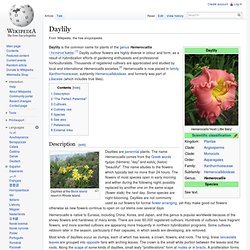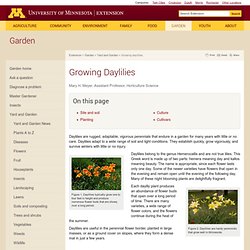

Philodendron dictionary definition. Houseplant Needs - Houseplants. Heartleaf Philodendron Care - Philodendron scandens. Botanical Name: Philodendron scandens Heartleaf philodendron is a popular house plant because it is extremely easy to grow.

It's also known as the Sweetheart Plant. Heart-shaped, glossy leaves emerge bronze, then quickly turn green. The leaves are typically 2-4 in (5-10 cm) long, and cover its long, slender stems that can grow to 4 ft (1.2 m) or more. Pinch your plant. Pinching tip: Try to pinch close to the node because any bare stem that is left will die, and the node will not grow a new stem. Aloe vera. Aloe vera (/ˈæloʊiː/ or /ˈæloʊ/) is a succulent plant species.

The species is frequently cited as being used in herbal medicine since the beginning of the first century AD. Extracts from A. vera are widely used in the cosmetics and alternative medicine industries, being marketed as variously having rejuvenating, healing, or soothing properties. There is, however, little scientific evidence of the effectiveness or safety of Aloe vera extracts for either cosmetic or medicinal purposes, and what positive evidence is available is frequently contradicted by other studies.[3][4][5][6] Description[edit] Aloe vera leaves contain phytochemicals under study for possible bioactivity, such as acetylated mannans, polymannans, anthraquinone C-glycosides, anthrones, anthraquinones, such as emodin, and various lectins.[5][10][11] Taxonomy and etymology[edit] Spotted forms of Aloe vera are sometimes known as Aloe vera var. chinensis Distribution[edit] Aloe Vera - Aloe barbadensis - Aloe Plants Picture, Care Tips.
Botanical Name: Aloe barbadensis Also called Burn Plant or Medicine Plant, Aloe Vera is known for the healing properties of its sap.

Many people use the gel-like liquid from a broken leaf to soothe minor burns and abrasions. Aloe plants are hardy, slow-growing succulents that grow in rosettes of plump, upward-curving green leaves. The leaves are faintly spotted and edged with soft teeth. Spider Plant. Chlorophytum comosum, often called the spider plant, airplane plant or hen-and-chickens,[2] is a flowering perennial herb. It is native to tropical and southern Africa, but has become naturalized in other parts of the world, including western Australia.[3][4] Variegated forms in particular are used as houseplants.
Description[edit] Chlorophytum comosum grows to about 60 centimetres (24 in) high. It has fleshy, tuberous roots, about 5–10 centimetres (2–4 in) long. The long narrow leaves reach a length of 20–45 centimetres (8–18 in) and are around 6–25 millimetres (0.2–1.0 in) wide.[5] Flower of Chlorophytum comosum 'Vittatum' The inflorescences carry plantlets at the tips of their branches, which eventually droop and touch the soil, developing adventitious roots. Fleshy roots of pot-grown Chlorophytum comosum Taxonomy[edit] The species has been confused with Chlorophytum capense (L.)
Intra-specific variation[edit] Spider Plant Care Tips, Picture - Chlorophytum comosum. Botanical Name: Chlorophytum comosum Spider Plant is an impressive house plant for beginners.

It's easy to care for, tolerates average room conditions, and is easy to propagate. The slender, arching leaves are dark green with a creamy white stripe. Leaves grow from a central crown and can reach up to 1 ft (30 cm) long. Give this plant plenty of light for the best leaf color. When less than a year old, the plant produces small, white flowers on the tips of wiry, upright stems, called runners. The runners are soon weighted down with plantlets giving it a spidery appearance. These plantlets -- often called "babies" -- are easy to propagate, giving you an ongoing supply of plants. Repot in spring when the plant has outgrown its pot. No blooms? Spider plants look best in hanging baskets or on tall stands or pedestals to show off their trailing foliage.
Origin: South Pacific and South Africa. Daylily. Description[edit] Daylilies are perennial plants.

The name Hemerocallis comes from the Greek words ἡμέρα (hēmera) "day" and καλός (kalos) "beautiful". This name alludes to the flowers which typically last no more than 24 hours. The flowers of most species open in early morning and wither during the following night, possibly replaced by another one on the same scape (flower stalk) the next day. Growing daylilies : Yard and Garden : Garden. Extension > Garden > Yard and Garden > Growing daylilies Mary H.

Meyer, Assistant Professor, Horticulture Science Daylilies are rugged, adaptable, vigorous perennials that endure in a garden for many years with little or no care. Daylilies adapt to a wide range of soil and light conditions. They establish quickly, grow vigorously, and survive winters with little or no injury. Figure 1. Daylilies belong to the genus Hemerocallis and are not true lilies. Figure 2. Each daylily plant produces an abundance of flower buds that open over a long period of time. Daylilies are useful in the perennial flower border, planted in large masses, or as a ground cover on slopes, where they form a dense mat in just a few years. Site and soil.